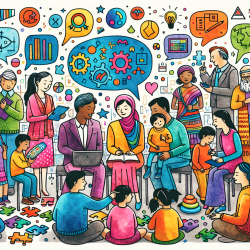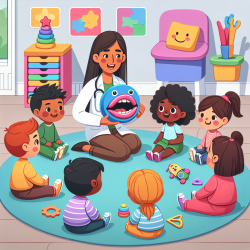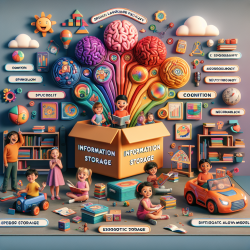As practitioners in the field of speech-language pathology, our ultimate goal is to create the best possible outcomes for children with Autism Spectrum Disorder (ASD). One promising approach is to incorporate insights from stakeholders directly involved in the lives of these children. A recent qualitative study titled "Stakeholder Perspectives to Support Graphical User Interface Design for Children with Autism Spectrum Disorder: A Qualitative Study" offers valuable recommendations for improving the design of digital supports. Let's explore how these findings can enhance your practice.
Key Findings and Practical Applications
1. Customization is Crucial
The study highlights the importance of customization in technology used by children with ASD. Each child is unique, and technology should be adaptable to their specific needs, interests, and abilities. Customizable elements include:
- Images and symbols
- Text and fonts
- Colors and layouts
- Audio elements
By tailoring these aspects, you can create a more engaging and effective learning environment for each child.
2. Simplified and Predictable Interfaces
Children with ASD often benefit from interfaces that are simple and predictable. The study recommends using a grid layout with a left-to-right organization, minimal information, and large-sized elements. This approach helps children focus on the main content and reduces distractions.
3. Visual Supports are Essential
Visual supports play a significant role in helping children with ASD process information. The study emphasizes the use of clear, realistic images, such as ARASAAC pictograms, which are more iconic and easier for children to understand. These visual aids can be customized to match the child's level of visual cognition.
4. Multimodal Information Presentation
Combining visual and auditory information can enhance learning for children with ASD. The study suggests using speech synthesis for auditory reinforcement and providing the option to customize or replace it with a familiar voice if needed. This multimodal approach caters to different sensory preferences and helps reinforce learning.
5. Color as a Learning Facilitator
Colors can be used strategically to facilitate information processing. The study recommends using background colors consistently to categorize information and ensure a good contrast between the image and the background. Soft tones are preferred to avoid overstimulation.
Encouraging Further Research
While these findings provide a strong foundation, ongoing research is essential to refine and validate these recommendations. Practitioners are encouraged to participate in or conduct further studies to explore the effectiveness of these design elements in real-world settings.
Conclusion
Incorporating stakeholder perspectives into the design of digital supports for children with ASD can significantly enhance their learning experiences. By customizing technology, simplifying interfaces, using visual supports, presenting multimodal information, and strategically employing colors, we can create more effective and engaging tools for our young learners. Let's continue to innovate and research to unlock the full potential of every child with ASD.
To read the original research paper, please follow this link: Stakeholder Perspectives to Support Graphical User Interface Design for Children with Autism Spectrum Disorder: A Qualitative Study.










